What Are Festoon Bulbs? Everything You Need to Know
A Festoon bulb is a cylindrical, tube-shaped bulb with metal caps on both ends. Unlike wedge-base bulbs that push into a socket, Festoon bulbs fit into clips inside the light housing. Festoon base bulbs are commonly used for a vehicle’s interior lights, including license plate lights, dome lights, map lights, trunk lights, and door courtesy lights.
This guide breaks down their specifications, compatibility, and everything you need to know about Festoon bulb sizes, helping you make an informed choice when replacing your car’s bulbs.
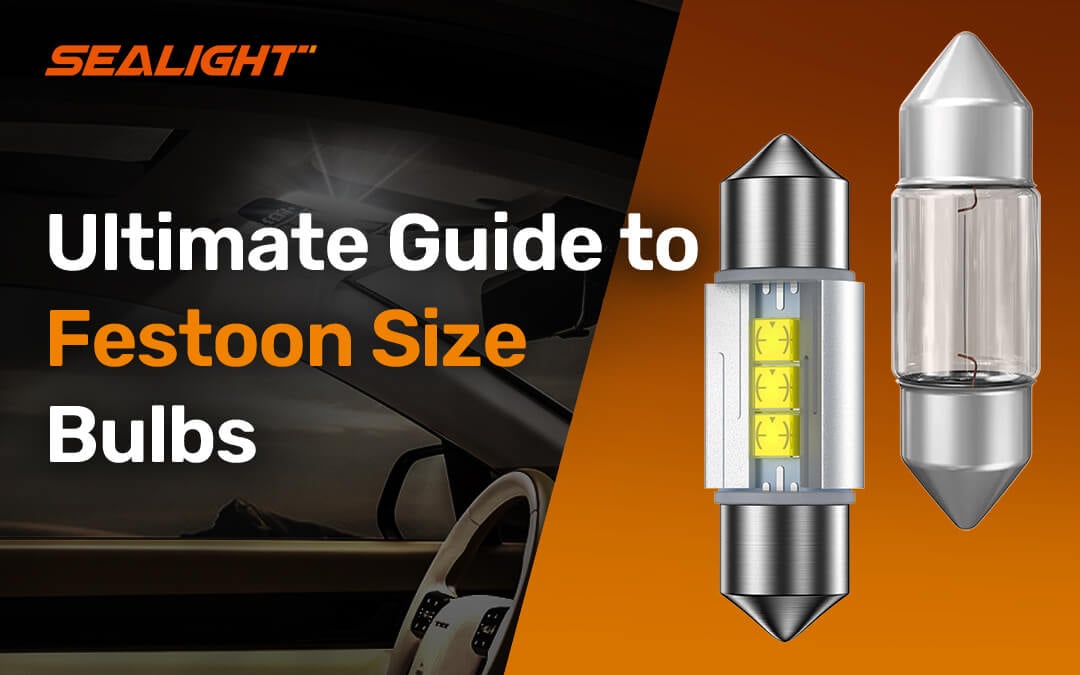
What Is the Compatibility of Festoon Bulb Size?
Festoon bulbs come in several lengths and diameters, with the most common measured in millimeters.
29mm: 6614F, 6641, 6614, F30-WHP, TS-14V1CP
31mm / 3022: 3022, 3175, DE3022, 6428, DE3021, 7065, DE3175, DE3022LL, DE3021LL, DE3175LL
36mm: 3910, 3423, 3425, 6411, 6423, 6461, 3710, 6418, 6486X, 6461, 6418LL
41mm / 211: 578, 4210, 6451, DE3425, DE3423, DE3425LL, DE3423LL, 212, 212-2, 214-2, 6413, 6429
With so many cross-references, how do you find the exact bulb for your vehicle? The easiest way is to check your owner’s manual or the original bulb for its size. You can also use an online car bulb finder, which quickly matches your vehicle to the correct Festoon bulb.
When shopping at an automotive online store like SEALIGHT, you can double-check your vehicle fitment or find the complete vehicle fitment chart at the product page.
What Is the Voltage and Wattage of Festoon Bulbs?
Stock Festoon bulbs are usually 12 - 24 volts, compatible with standard automotive electrical systems. Halogen or incandescent versions generally range between 5–10 watts, depending on the application and size.
What Is the Lifespan of Festoon Bulbs?
Incandescent Festoon bulbs last around 500–2,000 hours, gradually dimming over time as the filament wears down.
LED Festoon bulbs can last 25,000–50,000 hours, often outlasting the vehicle itself. LEDs also resist vibration and heat, making them ideal for automotive use.
How Bright Are the Festoon Bulbs?
The brightness of Festoon bulbs largely depends on the type and wattage. Traditional halogen Festoon bulbs usually produce between 15 and 50 lumens, providing soft, functional light.
LED Festoon bulbs, on the other hand, are significantly brighter, often delivering 300 to 600 lumens.
What Are Festoon Bulbs Used For in a Vehicle?
Festoon bulbs are primarily used in interior and auxiliary lighting. Common applications include:
Dome lights – Central interior cabin lights
Map lights – Small reading lights for driver and passengers
Trunk and cargo lights – Illuminating storage areas
License plate lights – Ensuring plates are visible at night
Courtesy lights – Door lights and step lights
Because of their shape, Festoon bulbs are ideal for compact housings and provide even, bright light across the surface area.
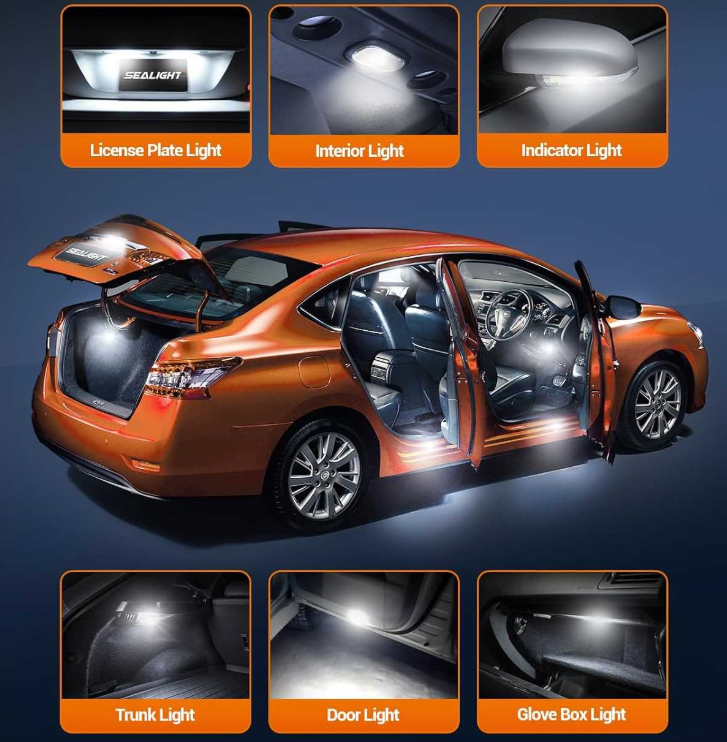
Are LED Festoon Bulbs Worth It?
Yes—LED Festoon bulbs are widely considered a worthwhile upgrade. One of the biggest advantages is energy efficiency: LEDs use much less power than traditional incandescent bulbs, which is especially helpful in vehicles or boats where conserving battery life matters.
Longevity is another benefit. Quality LED Festoon bulbs can last for years without failing.
LEDs also produce less heat, making them safer and less likely to cause heat-related issues in enclosed spaces.
While the upfront cost is higher than halogens, the long lifespan and energy savings make LEDs cost-effective over time, giving you brighter, more reliable light with less hassle.
Where to Buy Festoon LED Bulbs?
SEALIGHT is a top choice for automotive LED bulbs, including festoon bulbs. We offer bright, reliable, and long-lasting illumination for interior and auxiliary lights. You can find clear fitment charts for your vehicle and CANbus-compatible designs for error-free, plug-and-play installation.
Below are the best Festoon LED bulbs recommended:
Read More:
- Car Light Bulb Size Cross Reference-Headlight, Fog Light & More
- What Are Festoon Bulbs? Everything You Need to Know
- 1156 vs. 1157 Bulbs Explained: Compatibility, Brightness & More
- T15 vs. 921 vs. 912 Explained: Everything You Need to Know
- What Are 194, T10, 168 Bulbs? The Ultimate Guide
- What Are 7443, 7440 Bulbs? The Ultimate Guide



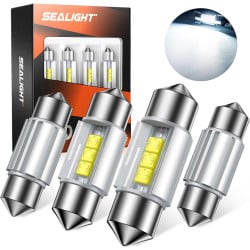
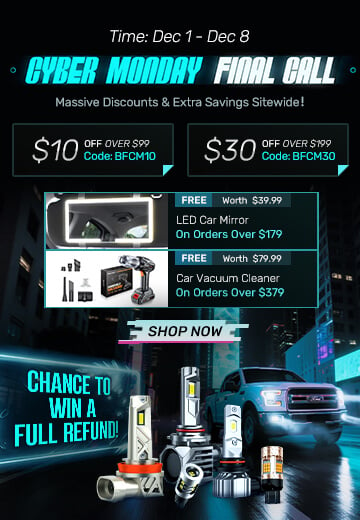

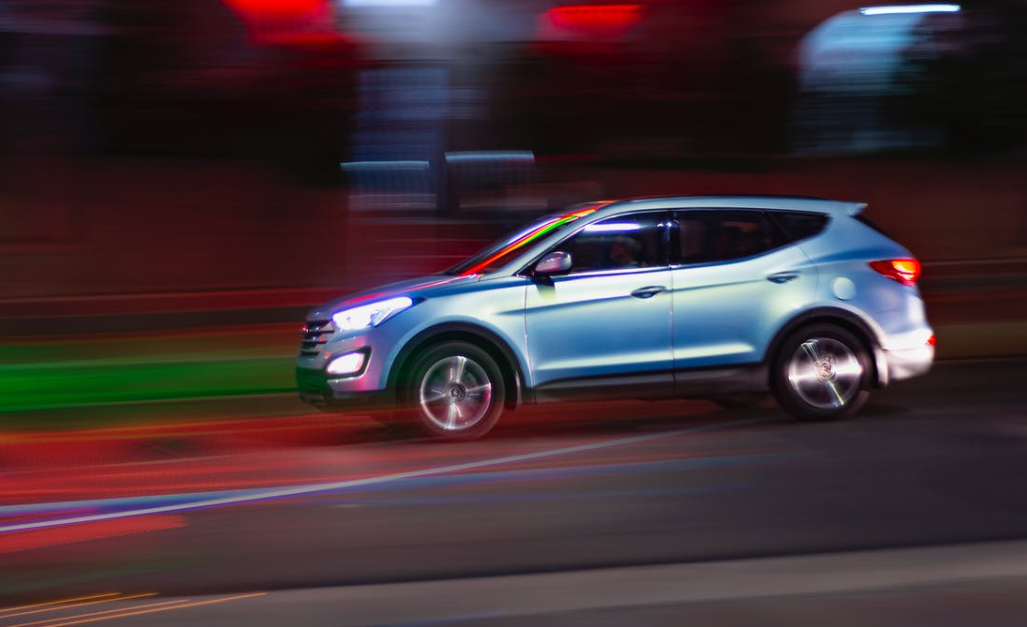
Leave a comment